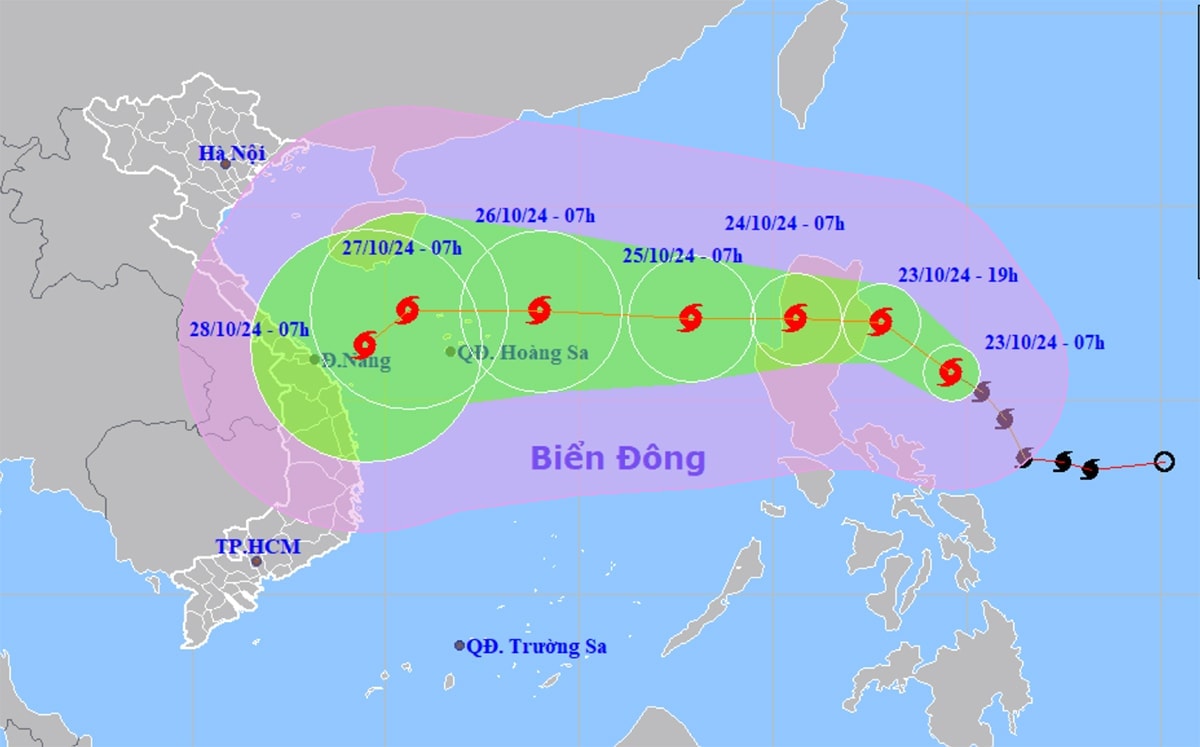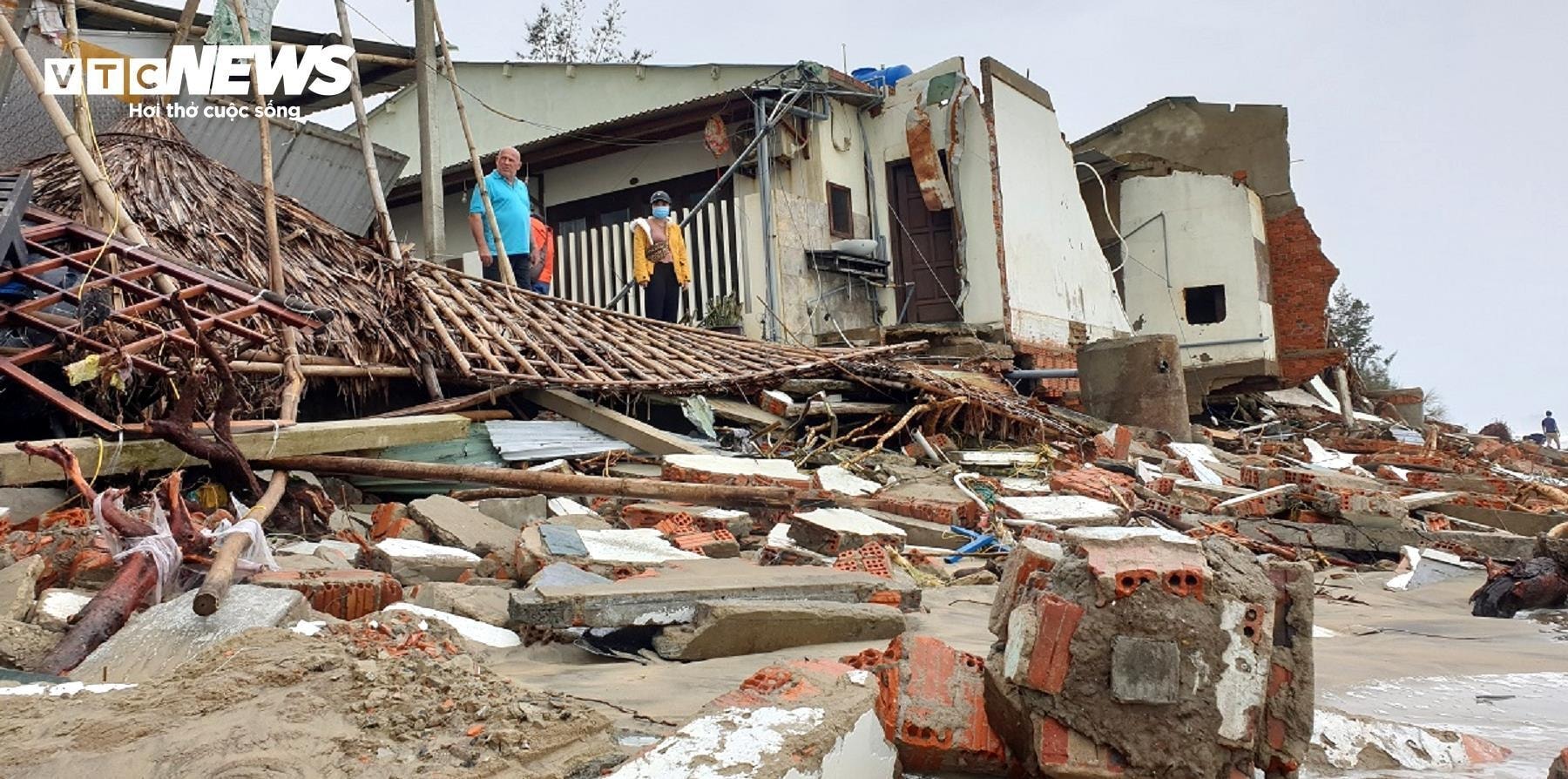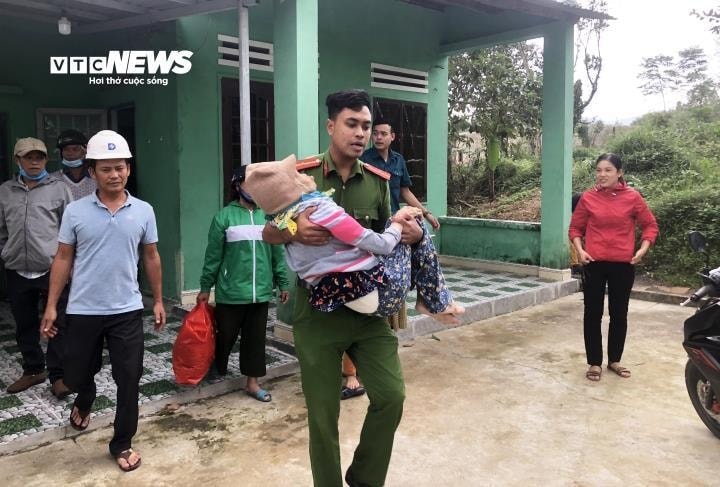Experts share information about naming storms in Vietnamese and since 2000, Vietnam has nominated 10 storm names to the International Typhoon Committee.

Sharing about the name of storm Tra Mi given by Vietnam, Mr. Le Dinh Quyet - Head of Hydrometeorological Forecasting Department, Southern Hydrometeorological Station said that storm names are given and selected in order. Therefore, when that name comes and a storm appears, it will be assigned to them. Like this storm, the name "Trami" came and was assigned to the current storm.
"In the Northwest Pacific and East Sea (including storms that hit Vietnam), most storms are named after places, animals or plants to highlight the characteristics of the country that names them. Each country is given 10 storm names, divided into 5 lists and will rotate annually. Therefore, when hearing the storm name, it often has a very beautiful name," said Mr. Le Dinh Quyet.
In addition to the name, each storm is assigned a specific identification number (ID). In the Northwest Pacific region, storm IDs begin with the last two digits of the year (for example, in 2024, the ID prefix is 24) and end with the order number of the storm appearing in the region. For example, storm Trami has the ID 2420, meaning the year of appearance is 2024 and is the 20th storm in the Northwest Pacific region, the international name is Trami.
According to Mr. Quyet, naming storms has been around for a long time, to help quickly identify storms in warning notices.
Names are easier for people to remember than numbers and technical terms. They also make it easier for the media to report on storms, and help people heed warnings, which can help them better prepare for when storms hit.

Using short, personal names also makes written or spoken communications easier, faster, and less error-prone than the long, difficult-to-remember method of identifying storms by latitude and longitude. These provide important advantages in communicating detailed information about storms.
In particular, names of storms can be removed if they cause heavy damage to people and property. Normally, during the annual meetings of the WMO, names that “offend” will be removed.
For example, South Korea once proposed to remove the name of typhoon Saomai (nominated by Vietnam) from the list of typhoon names because the typhoon with this name caused serious consequences for South Korea. Vietnam also proposed to remove the name of typhoon Chanchu given by South Korea because it caused serious consequences for Vietnam.
In addition to the international names agreed upon by the Typhoon Committee from proposals from countries, many countries have their own naming systems, such as the Philippines, which has its own typhoon naming system. Typhoon Trami was named Kristine by the Philippines. Vietnam also names typhoons according to its own system using numbers in natural number sequences.
In fact, there are no statistics on how many storms with the strongest Vietnamese names have entered the East Sea and affected our country. From 2015 to 2023, there were about 7 storms with Vietnamese names that existed and entered the East Sea area.
The name of the storm Tra Mi was given by Vietnam. Tra Mi in Vietnamese is a flower belonging to the rose family. Camellia flower is also known as Son Tra flower, the flower's scientific name is Camellia Japonica, belonging to the tea genus. The flower originates from East Asia.
Vietnam proposes 10 storm names
According to the Vietnam General Department of Hydrometeorology, storms have many different names depending on the area where they originate. Storms that form in the Atlantic Ocean are called Hurricanes; those that form in the Pacific Ocean are called Typhoons; those that form in the Indian Ocean are called Tropical Cyclones.
Storms can stay at sea for an average of 7-8 days or longer. In the same area, at the same time, there can be 2 to 3 storms, or even more. Therefore, people have named storms to avoid confusion in providing information about each storm.

During World War II, US Army and Navy meteorologists used women's names to name hurricanes.
Tropical cyclones in the Northeastern Pacific Ocean were named after women from 1959 to 1960, and both male and female names were used in 1978. Tropical cyclones in the North Indian Ocean were not named. Tropical cyclones in the Southwestern Indian Ocean were named in 1960. Tropical cyclones in the Australian and South Pacific Oceans were named in 1964, and both male names were used in 1973.
Typhoons in the Northwest Pacific Ocean (including the South China Sea of Vietnam) were officially named after women starting in 1945, and men's names were also used in 1979. Since January 1, 2000, typhoons in the Northwest Pacific have been named from a new and very different list of names.
The newly added names include names proposed by 14 countries and territories in the Asia-Pacific region that are members of the World Meteorological Organization's Typhoon Committee. Each member provided 10 names, creating a list of 140 storm names.
Storms forming in the Northwest Pacific Ocean are assigned names by the World Meteorological Organization (WMO) to the Tokyo Tropical Storm Warning Center of the Japan Meteorological Agency.
The new list of storm names has two differences from the previous list. First, very few storm names are names of people, but most are names of flowers, birds, plants, animals, and even foods.
Second, the list of storm names is not arranged in alphabetical order but in alphabetical order of the countries that proposed the names.
One thing to note is that after a few years of summarizing, with storms causing heavy damage to the countries contributing names, those storm names will be removed from the list of storm names and replaced with a new name. Therefore, the list of storm names above is not fixed and is always being supplemented.
Since 2000, Vietnam has nominated the Storm Committee for names of storms in the Northwest Pacific region with 10 storm names including: SonTinh (Son Tinh), Lekima (Lekima), Ba Vi (Ba Vi), Conson (Con Son), Sonca (Son Ca), Trami (Tra Mi), Halong (Ha Long), Vamco (Vam Co), Songda (Song Da), Saola (Sao La).
In 2021, Vietnam proposed to change the name of the storm when it caused damage or when other countries requested to change. Since 2000, when the proposal was made, there have been the following changes: Saomai (old name) was renamed Sontinh (Son Tinh, name changed in 2008); Lekima (old name) was renamed Co-May (Co May, name changed in 2021); Vamco (old name) was renamed Bang-Lang (Bang Lang, name changed in 2022); Conson (old name) was renamed Luc-Binh (name changed in 2024); Saola (name proposed by the Philippines).
By October 2024, the storm names proposed by Vietnam on the Storm Committee system and the WMO have 10 storm names including: SonTinh (Son Tinh), Co-May (Co May), Bavi (Ba Vi), Luc-Binh (Luc Binh), Sonca (Son Ca), Trami (Tra Mi), Halong (Ha Long), Bang-Lang (Bang Lang), Songda (Song Da), Saola (Sao La).
TH (synthesis)